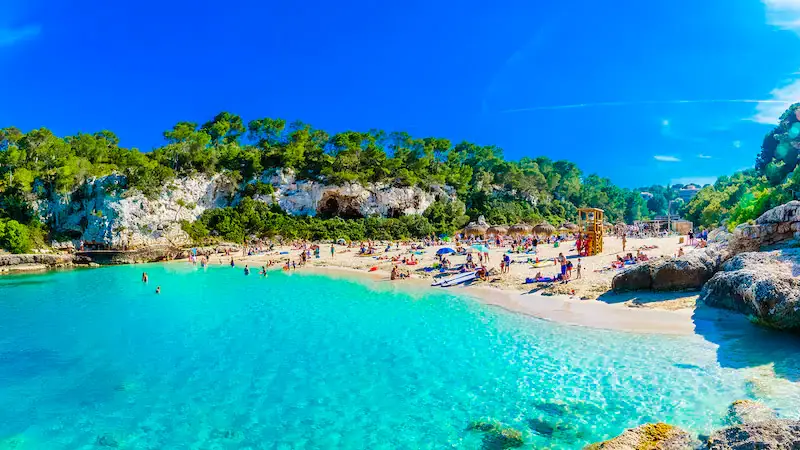Balearic Islands Hit Record High with a Tourist Surge in June
Tourist. record. In June 2023, 2.1 million international tourists chose the sun-drenched Balearic Islands for their holiday destination, marking a significant 5.1% increase from 2022. This marked the Islands as the top choice for international tourists visiting Spain, drawing in 24.7% of the total visitors, a tourist record.

Tourist Trends in the Balearic Islands
The National Institute of Statistics (INE) released data showing a positive trend for tourism in the Balearic Islands during the first half of 2023. It saw an increase of 9.8% in the number of tourists compared to the previous year, receiving a total of 5.7 million visitors.
Notably, the UK and Germany remain the primary source of these tourists, each country accounting for 30.9% of the total. Also, tourist expenditure in the islands showed a substantial increase, totalling 6,463 million euros for the first half of the year, an 11% rise from 2022.
Expenditure Per Person
In June, international tourists in the Balearic Islands spent a total of 2,453 million euros. This shows a significant 12.5% increase compared to the same month in 2022.
The average spending per person also increased in June to 1,192 euros, a rise of 7.1% from the previous year. Throughout 2023, the average spending per person grew by 1.1% to 1,132 euros. The average daily spending per person in June was 195 euros, an annual variation of 8.3%. In the first half of the year, the daily spending per person rose by 9.5% to 184 euros.
However, the average duration of international tourists’ trips to the Balearic Islands in June was slightly less at 6.1 days, a 1% decrease from 2022. In 2023, the duration of visits has reduced by 7.6% compared to the same period last year, with an average stay of 6.1 days.
National Tourism Trends
Nationwide, Spain witnessed an influx of 37.5 million international tourists in the first half of the year. This impressive figure represents a 23.7% increase compared to the same period in 2022, according to the INE data.
Moreover, there was a remarkable surge in tourist spending during this period, totalling approximately 46,011 million euros, a 28.3% increase from 2022. This spending spike is in line with the government’s strategy to promote higher-quality tourism.
Héctor Gómez, the acting Minister of Industry, Commerce, and Tourism, celebrated this progress, attributing it to the government’s focus on quality and excellence. In particular, he cited the extraordinary growth in tourism from the US as evidence of Spain’s appeal as a high-quality destination.
Global Tourist Sources and Destinations
In the first six months of 2023, the United Kingdom topped the list of tourist origins with nearly 7.8 million tourists, a 19.8% increase. France and Germany followed closely, sending almost 4.9 million tourists each, a 23.3% and 10.8% increase respectively.
Among Spanish destinations, Catalonia was the most popular, receiving 7.9 million tourists, a 30.5% increase from 2022. The Canary Islands attracted 6.8 million tourists, an 18.5% increase. Finally, the Balearic Islands welcomed 5.7 million tourists, a 9.8% increase.
June Tourism: A Closer Look
In June, Spain welcomed 8.3 million international tourists, a 10.9% increase from the same month in 2022. The United Kingdom was the primary market, contributing nearly 2 million tourists, or 23.8% of the total. Germany came next with 1.1 million visitors, a slight 1.3% decrease, and France with 925,133 tourists, showing a 6.4% increase.
Air travel remained the most common method of arrival, with over 7 million tourists coming through Spain’s airports, a 9.5% increase from the previous year. Road travel also saw a rise, increasing by 15.2%, as did rail travel, up by 26%, and sea travel, which grew by a significant 49.2%.
Tourist Record
As the global tourism industry rebounds, the Balearic Islands continue to attract increasing numbers of international tourists. The robust growth in visitor numbers and spending in the first half of 2023 are positive indicators of the Islands’ appeal and the overall resilience of Spain’s tourism sector.




Leave a Reply